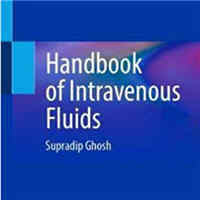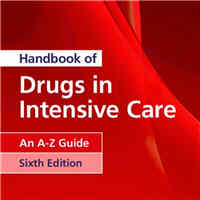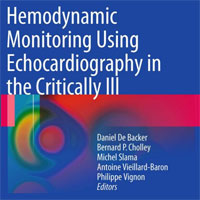Tag: treatment
Why a terminally ill young woman has changed her mind about living
o face each day, Claire Wineland undergoes hours of breathing treatments. It's a reality of living with cystic fibrosis she's come to accept. But last month, as the nebulizer hummed loudly in her La Jolla, California, hotel... read more
Implementing Treatment Algorithms for the Correction of Trauma Induced Coagulopathy
The 5-year TACTIC project is a multi-component study, a main focus of which is the development of European-wide clinical trial, entitled "Implementing Treatment Algorithms for the Correction of Trauma Induced Coagulopathy... read more
Sepsis patients treated and released from emergency departments do well with outpatient follow-up
National guidelines assume that all patients who're diagnosed with clinical sepsis in an emergency department will be admitted to the hospital for additional care, but new research has found that many more patients are being... read more
Early Noninvasive Ventilation and Nonroutine Transfusion for Acute Chest Syndrome in Sickle Cell Disease in Children
Early noninvasive ventilation combined with nonroutine transfusion is well tolerated in acute chest syndrome in children and may spare transfusion in some patients. Early recognition of patients still requiring transfusion... read more
Getting Creative with Ketamine
Versatile and safe, Ketamine can help with sedation, induction, asthma and pain. Can a shot of it even treat suicidality? New indications for Ketamine seem to be popping up every day. Its primary ED use is for procedural... read more
Clinical Chronobiology: A Timely Consideration in Critical Care Medicine
Circadian rhythms are currently low on the list of physiological priorities during ICU ward rounds. We have argued that recognition of the influence of this universally important system, and adoption of chronobiological strategies,... read more
A Basic Approach to Treating Various Types of Hypoxia
The use of supplemental oxygen is of no value when treating stagnant and histotoxic hypoxia because the problem is due to impaired cardiac function and cell enzyme inhibition respectfully. Supplemental oxygen is of little... read more
Can A Cocktail Of Vitamins And Steroids Cure A Major Killer In Hospitals?
Scientists have launched two large studies to test a medical treatment that, if proven effective, could have an enormous impact on the leading cause of death in American hospitals. The treatment is aimed at sepsis, a condition... read more
Ketamine Alters Hippocampal Cell Proliferation and Improves Learning in Mice after TBI
Ketamine alters hippocampal cell proliferation after traumatic brain injury (TBI). Surprisingly, these changes were associated with improvement in a neurogenesis-related behavioral recall task, suggesting a possible benefit... read more
The Use of Bolus-Dose Vasopressors in the Emergency Department
While bolus-dose vasopressors are commonly used in critical care medicine and anesthesiology to treat patients with hypoperfusion, its application in emergency medicine is minimal with little penetration into daily care.... read more
Adaptive servo ventilation cuts atrial fib burden
Adaptive servo ventilation produced a significant and clinically meaningful reduction in atrial fibrillation burden in patients with heart failure and sleep apnea in results from an exploratory, prospective, randomized study... read more
How Mayo Clinic Is Combating Information Overload in Critical Care Units
Health care teams depend on electronic health records (EHRs) to compile important medical data from innumerable lab tests and medical devices, observations, treatments, and diagnostic codes. We rely on it so much that we... read more
Establishing a Relationship of Trust and Care
An admission to the intensive care unit (ICU) is often a traumatic experience for both patients and families. Although members of the critical care team are specially trained to provide care and treatment requiring close,... read more
Atlas of Interventional Pain Management
Arranged by anatomic region, Atlas of Interventional Pain Management provides pain medicine specialists in practice and in training with the most up-to-date and practical guide to over 160 interventional pain management techniques.... read more
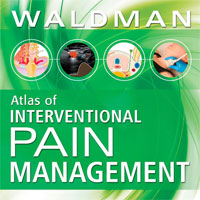
Virtual Reality to Improve Cognitive Alterations in ICU
More than 30 percent of patients who survive an episode of critical illness presents brain alterations that go beyond those of the disease that has led to the admission to intensive care (ICU). As a result of this cerebral... read more
Fluid, Electrolyte and Acid-Base Physiology
With a strong focus on problem solving and clinical decision making, Fluid, Electrolyte, and Acid-Base Physiology is your comprehensive, go-to guide on the diagnosis and management of fluid, electrolytes, and acid-base disorders.... read more
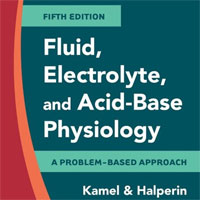
Septic Cardiomyopathy
Septic cardiomyopathy is an important contributor to organ dysfunction in sepsis. Guided treatment of septic cardiomyopathy may affect patients' prognosis, especially when their cardiac index is substantially decreased. The... read more
The Effects of a Delirium Notification Program on the Clinical Outcomes of the ICU
Increasing the physician's awareness of the patient's mental state by using a notification program could reduce the anxiety of ICU patients even though it may not reduce delirium. The results suggested that the method of... read more
Translating Evidence Into Practice in ARDS
Although the treatment of the acute respiratory distress syndrome (ARDS) with low tidal volume (LTV) mechanical ventilation improves mortality, it is not consistently administered in clinical practice. This review examines... read more
Improving Survival Rates From Sepsis
Sepsis kills more Australians each year than breast cancer and prostate cancer combined. Daily, as many as 20,000 people worldwide are thought to die from this deadly disease. Also known as blood poisoning, sepsis is a life-threatening... read more
The Speed of Sound: A New Measure to Single Out High-Risk PE Patients
Predicting which pulmonary embolism patients will do well with oral anticoagulation and which will decompensate is a bit murky, at best. The treatment of pulmonary embolism (PE) has evolved quite a bit in just the past few... read more
Phage Treatment of an Aortic Graft Infected with Pseudomonas Aeruginosa
Another phage therapy success. Bacteria-killing Viruses found in a pond knocked out an antibiotic resistant infection. Management of prosthetic vascular graft infections caused by Pseudomonas aeruginosa can be a significant... read more



